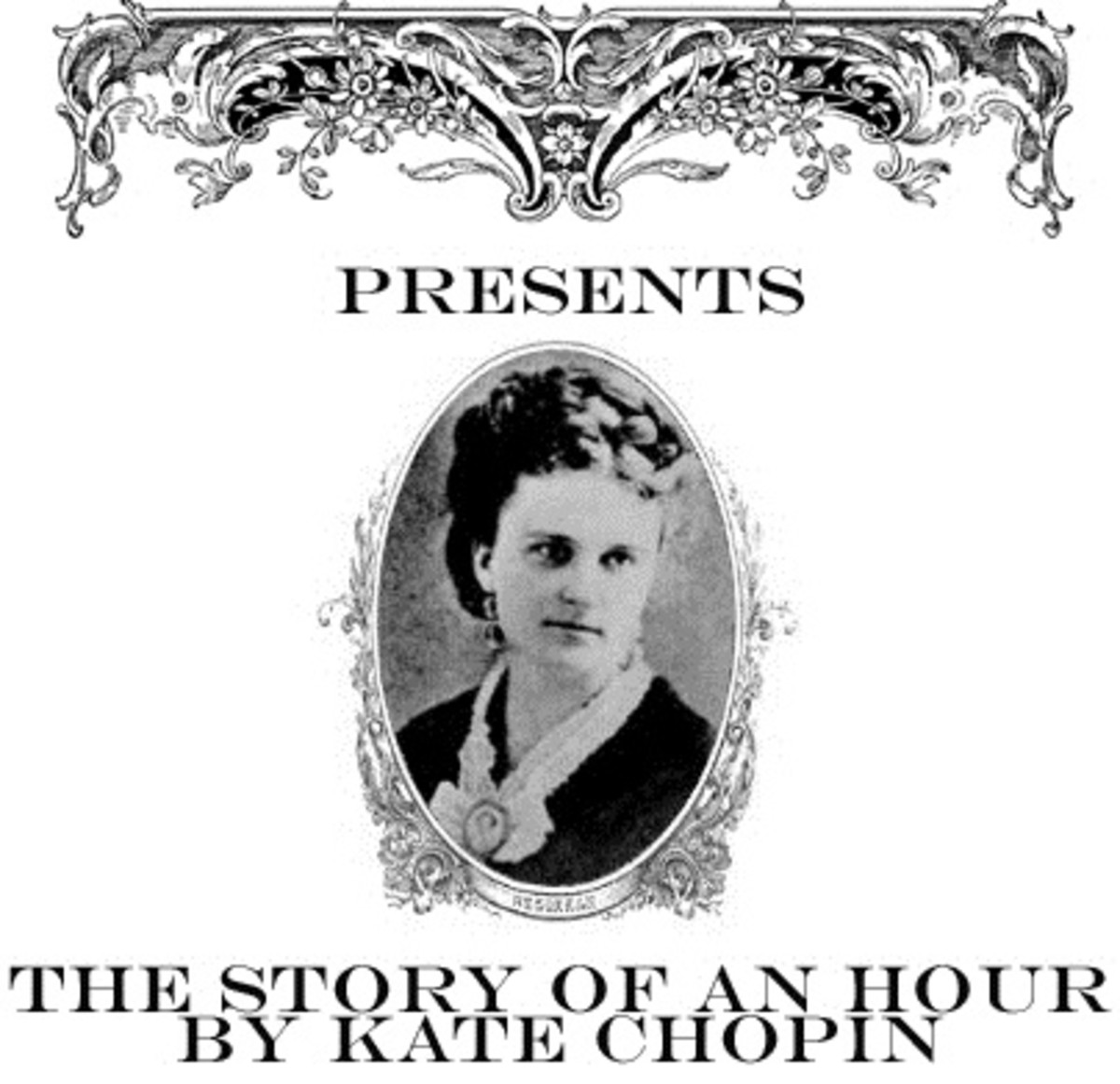Have you ever felt trapped? Not by physical chains, but by societal expectations and the weight of tradition? Imagine being told that your husband, the man you’ve pledged your life to, is dead. Would you feel grief? Relief? A mix of both, perhaps? Kate Chopin’s The Story of an Hour delves into these complex emotions, painting a vivid portrait of a woman grappling with newfound freedom in the face of societal constraints of the late 19th century. This short story, a mere 1,000 words, has resonated with readers for over a century, sparking debates and challenging societal norms. In the pages of this remarkable tale, we see a woman named Louise Mallard, caught in a whirlwind of emotions as she grapples with the news of her husband’s death. She finds herself torn between the expected grief and the unexpected joy of a life finally unburdened by the constraints of marriage.

Image: owlcation.com
The Story of an Hour, a provocative tale penned by Kate Chopin, challenges the reader to examine societal constructs and the complex interplay between personal desires and societal expectations. The story unfolds against the backdrop of a restrictive society where women were expected to be subservient to their husbands and were confined to the domestic sphere. Chopin, a writer ahead of her time, dares to expose the contradictions and complexities of a society where women’s agency and individuality were often stifled. Through Louise’s journey, we are transported to a world where the very essence of human desire is intricately woven with societal rules and the individual’s struggle for authenticity. The story compels us to contemplate the freedom of liberation and the complexities of choice within the confines of social norms.
A Woman’s Struggle for Self-Discovery:
The story begins with the devastating news of Brently Mallard’s death. We are introduced to Louise, a woman trapped in a marriage that, while perhaps not actively abusive, still represents a restriction on her personal autonomy. As the news of her husband’s death sinks in, Louise experiences an overwhelming wave of emotions. She is, in fact, “stricken with grief,” but beneath the surface of her sorrow, a different feeling begins to emerge. It’s a feeling of liberation, of newfound freedom that she recognizes as a powerful force within her being. Initially, this liberation is tinged with fear. Louise is afraid to embrace this new feeling, for she is aware of the weight of societal expectations and the disapproval she might face if she were to express her desires openly.
As the story progresses, Louise’s internal struggle evolves. She seeks refuge in her own private space, a sanctuary where she can confront her feelings without the judgmental gaze of society. It is here that Louise undergoes a transformation. She begins to envision a life untethered to the constraints of marriage, a life where she can finally claim her own agency and chart her own path. The story paints a vivid picture of this pivotal moment as Louise gazes out the window, acknowledging the beauty of the emerging spring as a metaphor for the budding of her own spirit. Louise’s journey underscores the importance of self-discovery and the search for agency within a society that might not be ready to grant it.
The Weight of Societal Expectations:
Chopin masterfully uses language to highlight the restrictions that Louise faces. Words like ‘constrained’, ‘oppressed’, and ‘subdued’ underscore the oppressive nature of a society that dictates a woman’s role solely based on her marital status. The reader begins to experience the same sense of restriction that Louise feels, a feeling that is often invisible to society until a moment of liberation presents itself. The story underscores the power of societal norms and how they can shape our perception of ourselves and the world around us. It also throws light on the unseen struggles women face, the internal battles they wage against the shackles of societal expectations, a reality that often goes unnoticed.
The Power of Freedom:
The climax of the story is the moment Louise discovers the essence of her liberation. In a powerful moment of clarity, she proclaims, “Free! Body and soul free!” This proclamation resonates with readers because it speaks to the universal desire for autonomy and the right to self-determination. The story, despite its brevity, embodies a fundamental truth about human nature: we all yearn for freedom and the chance to pursue our own dreams and desires. Yet, Chopin reminds us that this pursuit is often fraught with complexities, especially for women in a patriarchal society.

Image: discover.hubpages.com
A Devastating Twist:
However, the ending of The Story of an Hour introduces a shocking twist. Louise’s moment of liberation is cut short by the unexpected return of her husband. The physical constraints of marriage are reasserted, abruptly extinguishing the newly ignited flame of her personal freedom. Louise’s subsequent death, attributed to the “joy that kills,” leaves the reader with a sense of tragedy as well as a profound sense of frustration. Chopin’s narrative, through this twist, highlights the insidious nature of societal constraints and the ways in which they can restrict even the most basic human desires. This unexpected ending adds a layer of poignancy to the story, leaving the reader pondering the impact of societal expectations and the tragic cost of conforming, consciously or unconsciously.
The Story of an Hour: A Legacy of Debate:
The Story of an Hour, published in 1894, was instantly met with controversy. The depiction of a woman finding liberation in her husband’s death was seen as scandalous, at odds with the prevailing societal norms of the time. However, the story’s enduring popularity is a testament to its timeless themes. It has continued to resonate with readers across generations, sparking discussions about gender roles, marriage, and the complexities of female identity in a society that is constantly evolving. The story stands as a testament to the power of literature to challenge conventional thinking and spark critical discourse about the human condition.
The Enduring Relevance:
Today, The Story of an Hour remains a powerful piece of literature that continues to engage readers. It serves as a reminder of the societal constraints that women have historically faced and the lingering impact of those structures. The story is a call for a deeper understanding of human desires and the importance of self-expression, regardless of societal expectations. It urges readers to challenge traditional narratives and to embrace the complexity of human emotions. The story’s continued relevance in our modern world is testament to the enduring power of Chopin’s insightful reflection on the intricate interplay between love, freedom, and the complexities of being human.
The Story Of An Hour By Kate Chopin Pdf
The Story of an Hour – An Invitation to Explore:
If The Story of an Hour has stirred your curiosity, I encourage you to read it. The story is short enough to be read in one sitting, and its impact is lasting. This story is not just a fictional tale; it is a mirror reflecting the complexities of human experience. It invites us to examine our own assumptions, our own desires, and the societal forces that shape our lives. It is a powerful reminder that true liberation lies not just in challenging societal expectations but in finding the courage to embrace your true self.






